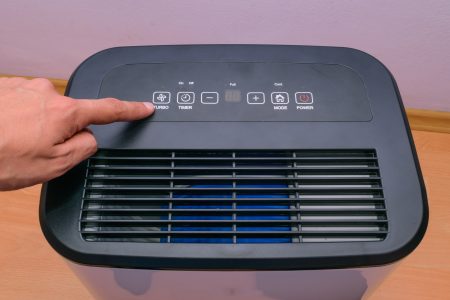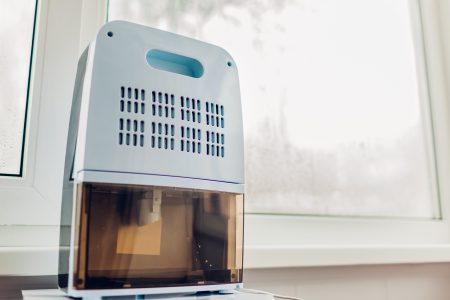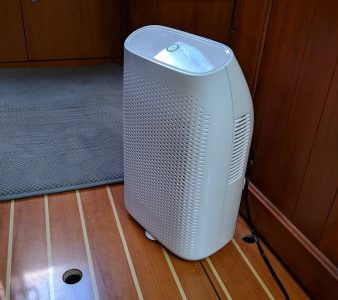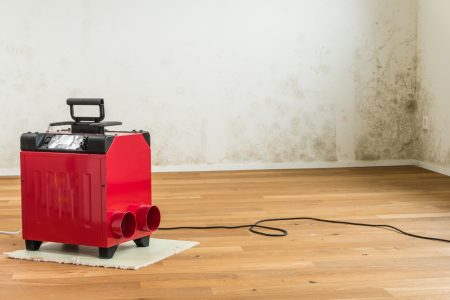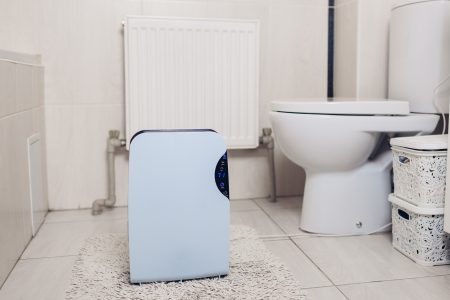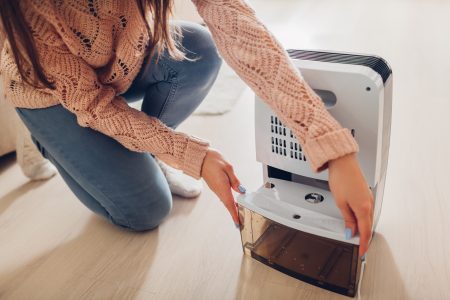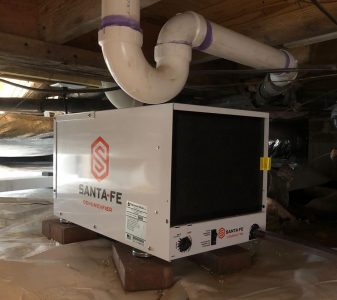Do you like the idea of having a dehumidifier but feel worried about the costs? You’re certainly not alone.
How much does it cost to ruin a dehumidifier? Many homeowners avoid dehumidifiers due to the extra cost on the monthly bills.
The cost depends on various factors, such as the unit’s size and type. To help you out, we’ll walk you through how much you can expect it to cost.
Key Takeaways
- Dehumidifiers help maintain a healthy humidity level (40-60%) in homes, preventing mold and bacteria growth.
- The cost of running a dehumidifier varies based on its size, with smaller units costing around $25 per year and larger units up to $350 per year.
- To calculate energy cost, find the power usage (in watts) and multiply by the utility company’s kilowatt-hour rate.
- Save on energy costs by choosing an energy-efficient dehumidifier, improving air circulation, and reducing indoor humidity.
Does My Dehumidifier Need to Run 24/7?
This depends on different factors, such as room size and humidity levels. New houses will often have higher relative humidity and will benefit from running the dehumidifier for a long time regularly.
It’s recommended that a house keeps the humidity between 40 and 60 percent to prevent mold and other bacteria (1). Once you get the humidity levels below 60 percent, you can experiment with different settings and times before finding what suits you.
In addition, many dehumidifiers are fitted with a timer and humidistat, which allows you to set your preferred levels. The dehumidifier will continue to run until the set level is acquired and then turned off. Another smart feature is the auto-shutoff that turns the unit off when the bucket is full.
You can run your dehumidifier for 24 hours daily, but this will strain the internal components. As a result, the lifespan of the dehumidifier will be shortened, and you’ll need to purchase a new one.
The Cost Of Constant Running
What Is the Average Cost of Running a Dehumidifier?
How much it costs to run a dehumidifier depends on the size of the unit. In general, smaller dehumidifiers — also known as mini dehumidifiers — cost about $25 a year to run. However, as the dehumidifier grows in size, so do the bills.
Larger units can reach a whopping $350 a year — this refers mainly to units that are 70 pints or more.
As an example, we calculated the average costs per hour based on the data you’ll find further down:
- Monthly cost for 24 hours per day: $48.
- Monthly cost for 12 hours per day: $24.
- Monthly cost for eight hours per day: $16.
- Monthly cost for six hours per day: $13.
- Monthly cost for four hours per day: $8.
How to Calculate the Energy Cost of Your Dehumidifier
How much energy your dehumidifier uses depends on your current power rate and how many watts it uses. It can be difficult to know exactly how much it costs, but you can make a rough estimate. Before you get started, there are two things you need to figure out:
- How much your utility company charges per kilowatt-hour: You can find this by looking for some added fees on your monthly bill. These are usually added to each kilowatt-hour.
- How much power your dehumidifier draws: This should be in watts, but not all companies use that. Instead, volts and amps are used — but don’t worry, you can easily convert it yourself. Simply multiply volts and amps to get your estimated wattage. Then, divide the watts by 1,000, so it’s in kilowatts.
Once you have these two figures, multiply them to estimate the cost per hour to run your dehumidifier.
How Much Do Dehumidifiers Cost?
In the following section, we’ve picked out five of the best and top-rated dehumidifiers to give you an estimated cost. We chose different sizes, ranging from small 13-pint to large 70-pint units.
Take Note
Tosot 30-Pint Dehumidifier
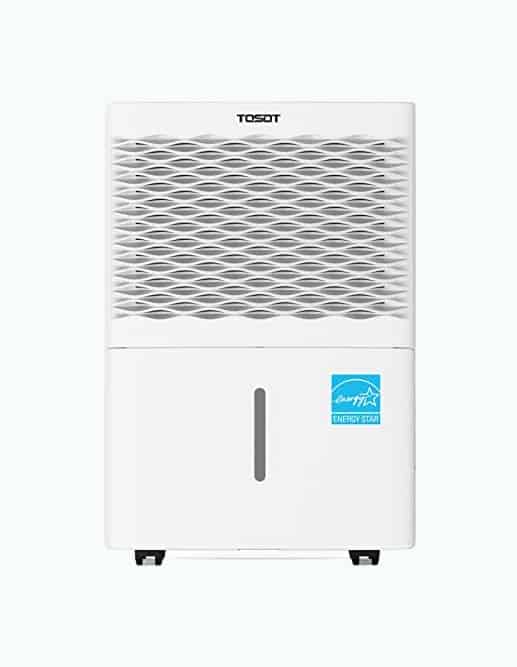
- Pints Per Day: 30.
- Energy Star Rated: Yes.
- Power Usage: 295 W.
| Active Time | Inactive Time | Cost Estimates |
| 24 | 0 | Daily: $0.99 > Monthly: $29.74 > Yearly: $362 |
| 12 | 12 | Daily: $0.49 > Monthly: $14.9 > Yearly: $180.89 |
| 8 | 16 | Daily: $0.33 > Monthly: $9.912 > Yearly: $120.59 |
| 6 | 18 | Daily: $0.24 > Monthly: $7.43 > Yearly: $90.44 |
| 4 | 20 | Daily: $0.16 > Monthly: $4.95 > Yearly: $60.29 |
Frigidaire High-Efficiency 35-Pint Dehumidifier
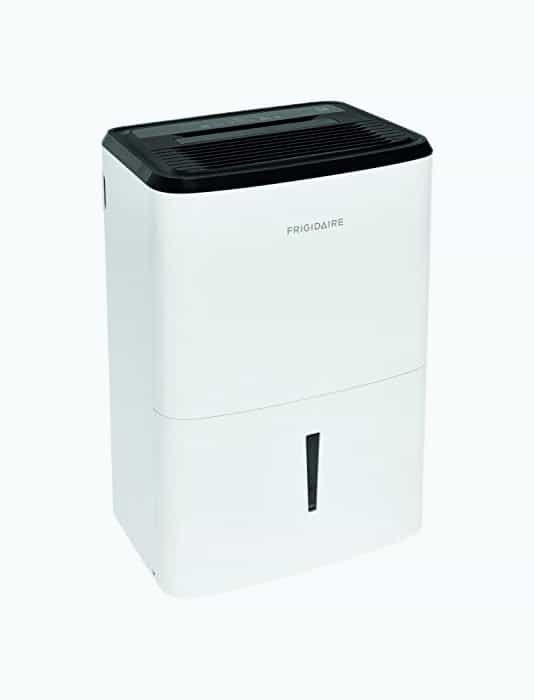
- Pints Per Day: 35.
- Energy Star Rated: Yes.
- Power Usage: 380 W.
| Active Time | Inactive Time | Cost Estimates |
| 24 | 0 | Daily: $1.27 > Monthly: $38.1 > Yearly: $466.03 |
| 12 | 12 | Daily: $0.64 > Monthly: $19.15 > Yearly: $233.60 |
| 8 | 16 | Daily: $0.42 > Monthly: $12.76 > Yearly: $153.30 |
| 6 | 18 | Daily: $0.31 > Monthly: $9.57 > Yearly: $113.15 |
| 4 | 20 | Daily: $0.21 > Monthly: $6.38 > Yearly: $76.65 |
Keystone 50-Pint Dehumidifier
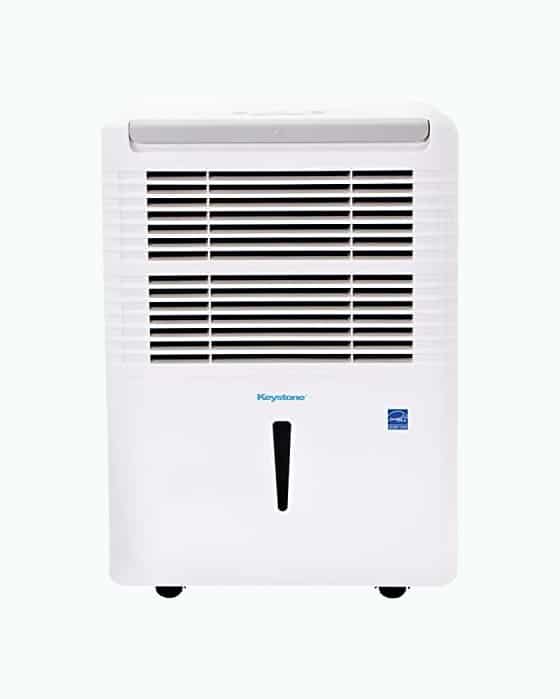
- Pints Per Day: 50.
- Energy Star Rated: No.
- Power Usage: 520 W.
| Active Time | Inactive Time | Cost Estimates |
| 24 | 0 | Daily: $1.74 > Monthly: $52.41 > Yearly: $637.65 |
| 12 | 12 | Daily: $0.87 > Monthly: $26.20 > Yearly: $318.86 |
| 8 | 16 | Daily: $0.58 > Monthly: $17.47 > Yearly: $212.43 |
| 6 | 18 | Daily: $0.43 > Monthly: $13.10 > Yearly: $159.4 |
| 4 | 20 | Daily: $0.29 > Monthly: $8.73 > Yearly: $106.28 |
Colzer 70-Pint Dehumidifier
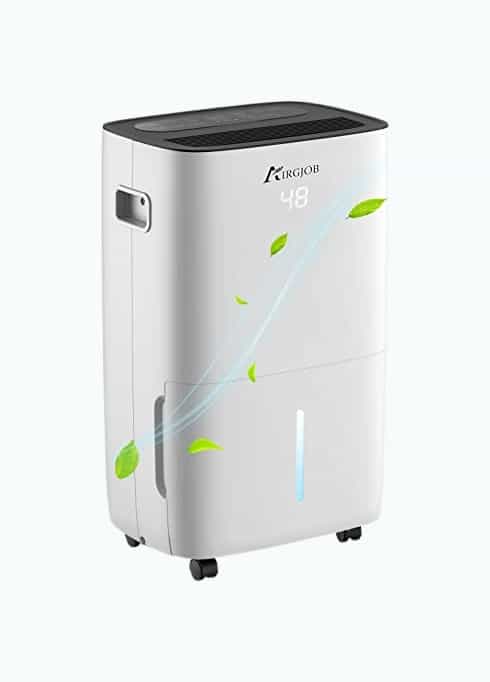
- Pints Per Day: 70.
- Energy Star Rated: Yes.
- Power Usage: 360 W.
| Active Time | Inactive Time | Cost Estimates |
| 24 | 0 | Daily: $1.20 > Monthly: $36.28 > Yearly: $441.3 |
| 12 | 12 | Daily: $0.60 > Monthly: $18.14 > Yearly: $220.46 |
| 8 | 16 | Daily: $0.40 > Monthly: $12.16 > Yearly: $147.1 |
| 6 | 18 | Daily: $0.30 > Monthly: $9.7 > Yearly: $110.37 |
| 4 | 20 | Daily: $0.20 > Monthly: $6.04 > Yearly: $73.58 |
Ivation 13-Pint Desiccant Dehumidifier
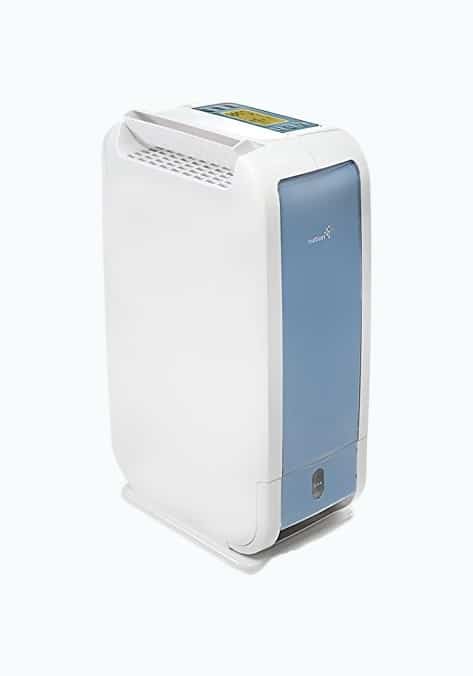
- Pints Per Day: 13.
- Energy Star Rated: No.
- Power Usage: 470 W.
| Active Time | Inactive Time | Cost Estimates |
| 24 | 0 | Daily: $1.57 > Monthly: $47.37 > Yearly: $576.3 |
| 12 | 12 | Daily: $0.789 > Monthly: $23.68 > Yearly: $287.98 |
| 8 | 16 | Daily: $0.52 > Monthly: $15.79 > Yearly: $191.99 |
| 6 | 18 | Daily: $0.39 > Monthly: $11.84 > Yearly: $144.2 |
| 4 | 20 | Daily: $0.26 > Monthly: $7.89 > Yearly: $96.06 |
Tips for Reducing Dehumidifier Costs
According to the estimates above, even if you have a small dehumidifier or Energy Star-rated devices, it will show on the bills. Most dehumidifiers — apart from mini-models — will cost you around $100 or more a year. Luckily, there are ways to help your dehumidifier and lower the costs:
1. Choose the Right Size
When choosing the right size dehumidifier, consider the capacity of the dehumidifier. This is also referred to as pints per day (ppd) and room coverage.
These are crucial points to get right for your dehumidifier to work optimally. Choosing a unit that can only cover 250 square feet and placing it in a large basement won’t help your bills. As a result, the dehumidifier is likely to run for 24 hours each day, pushing air through without dehumidifying it properly.
Therefore, before buying a dehumidifier, consider where you will use it. If you’re planning on moving it from room to room, consider how large the biggest room is. Thus, you can find a suitable dehumidifier that can easily cover each room efficiently.
Regarding capacity, you might think it’s best to choose a small 30-pint due to lower costs. But this isn’t the case.
If you were to run a 50-pint and 30-pint dehumidifier in two equally-sized rooms, which one do you think would finish first? The 50-pint dehumidifier will move more air, thus dehumidifying the room quicker — which means you get to turn it off sooner.
2. Improve Air Circulation Naturally
Improving the air circulation within your home can lessen the need for a dehumidifier. If you have a few standing or ceiling fans, let them run a few moments each day. In addition, you can open a window or two to help bring some fresh air in.
One of the leading causes of a humid indoor environment is that moisture has nowhere to escape. By opening a few windows and running a fan, you can effectively exchange the water vapor for some crisp outdoor air.
3. Use Moisture Adsorbers
Moisture adsorbers or desiccants are highly effective at removing moisture. There are different types, and the larger ones will use a significant amount of energy.
However, smaller desiccants, such as the Eva-Dry, operate without electricity. You’ll only need to hook it up when recharging is required.
Although this type of moisture absorber won’t replace your dehumidifier, it could minimize the job. By assisting your dehumidifier when needed, you can reduce running times and, thus, save energy.
4. Go for Energy-Efficient Dehumidifiers
If you have yet to purchase a dehumidifier, we highly recommend you look for energy-efficient models. These are generally Energy Star rated, which means they use up to 20 percent less energy. In addition, Energy Star-rated dehumidifiers cost the same as regular models, so you don’t have to worry about the initial price.
5. Reduce Humidity
Here are a few other ways you can reduce humidity within your home to save energy:
- Improve drainage: It’s not only things inside the house that can raise the humidity; the outside surroundings also play a part. Therefore, you should avoid over-watering plants near the house. You should also keep your gutters clean and clear. In addition, try to extend the downspouts away from your house to avoid water pooling by the foundation (2).
- Repair leaks: Humidity levels will rise if there’s a leak somewhere in your house. Before setting your dehumidifier to work, fix the leak to stop the source of moisture.
- Consider how you dry your clothes: If you use a clothes dryer in your home, ensure it’s vented outdoors. On the other hand, if you don’t have a dryer, hang your clothes outside to dry if possible.
6. Limit Your Dehumidifier
Refrigerant dehumidifiers generally don’t work well in cold temperatures. Therefore, refrain from using it altogether during the colder months of the year.
When it’s cold, the coils will have a hard time heating — the dehumidifier will then use more energy and can eventually burn out.
So if you live in an area where you see many cold months, consider a desiccant dehumidifier instead. These use a desiccant material and don’t have a compressor or refrigerant liquid.
